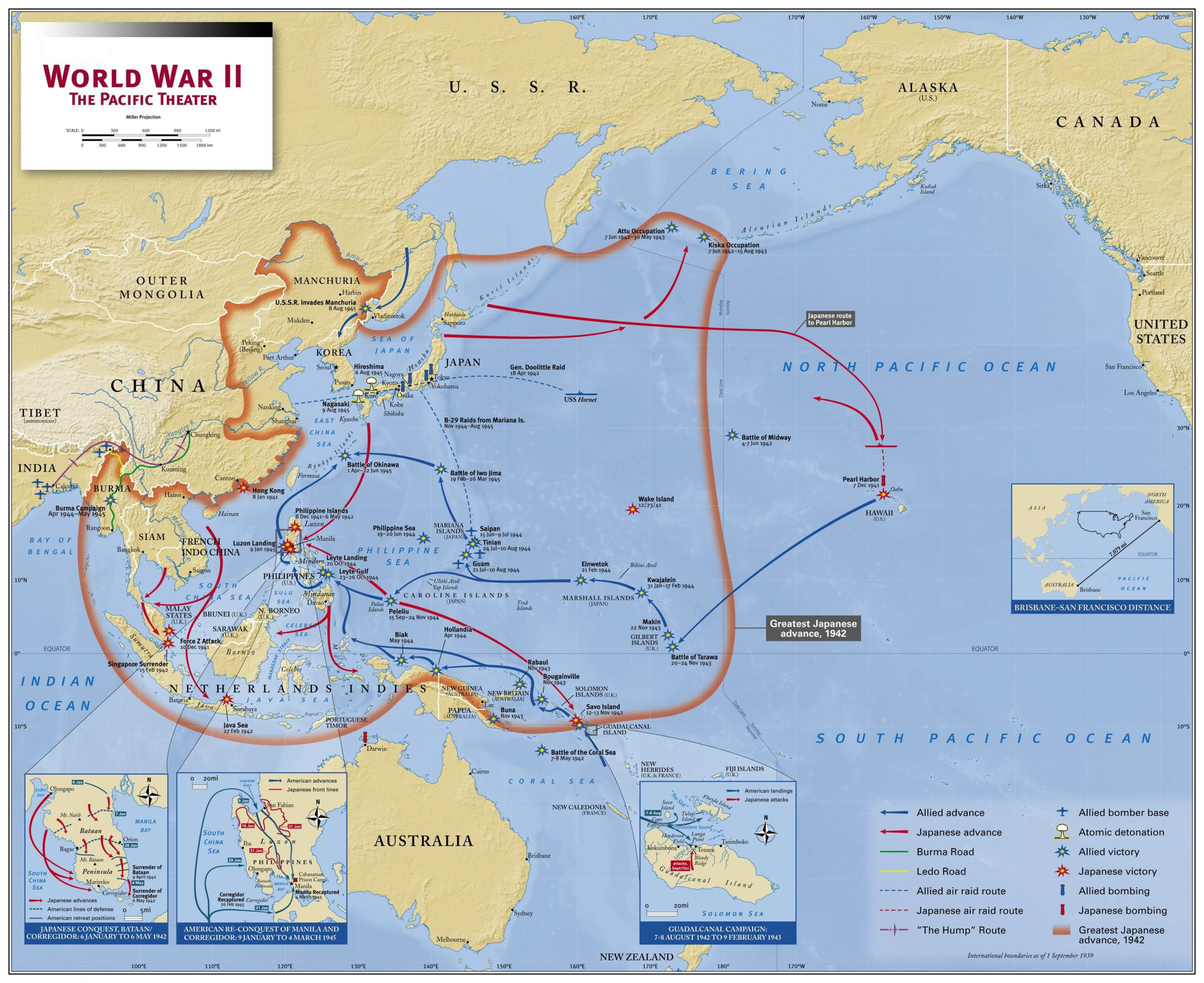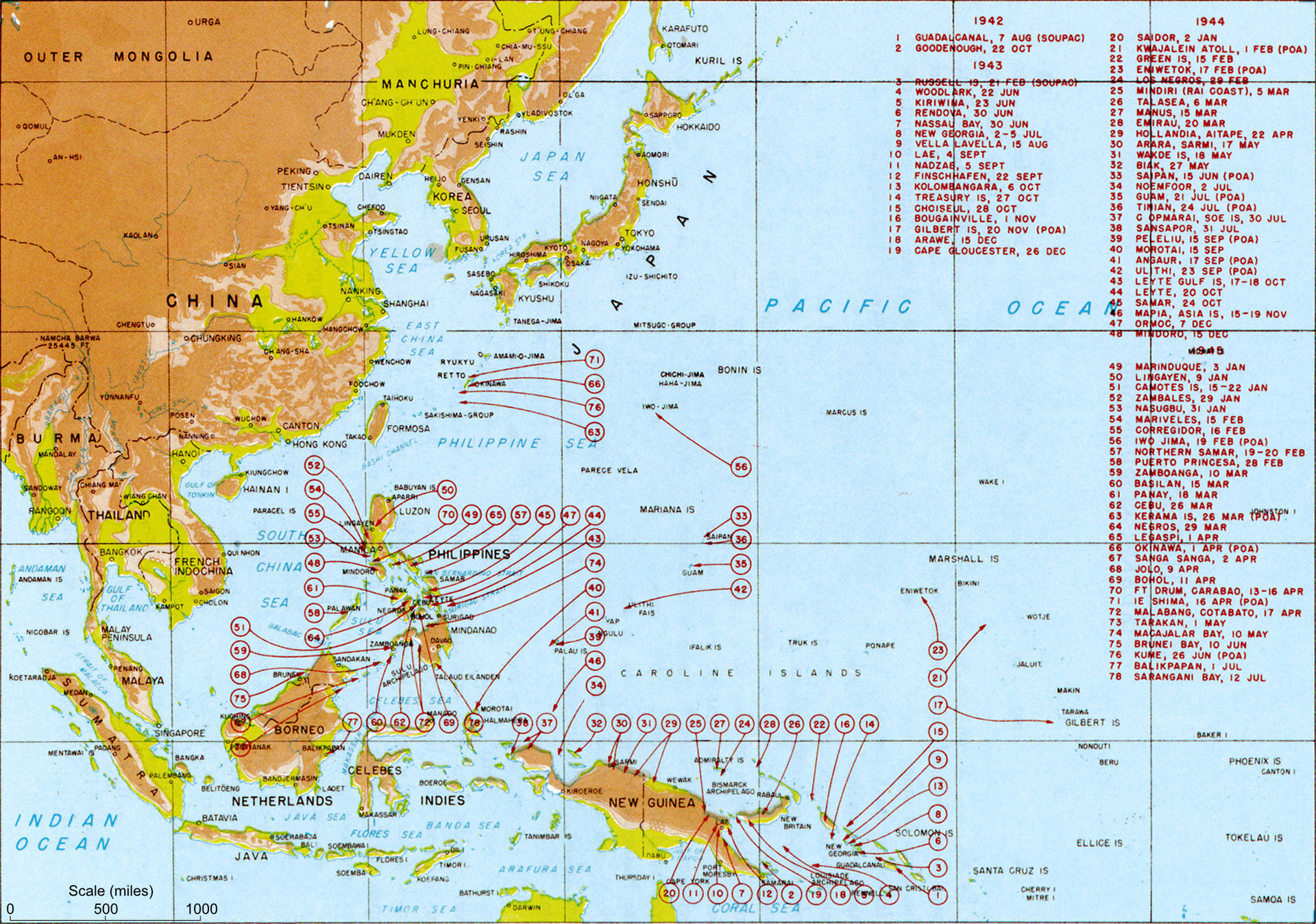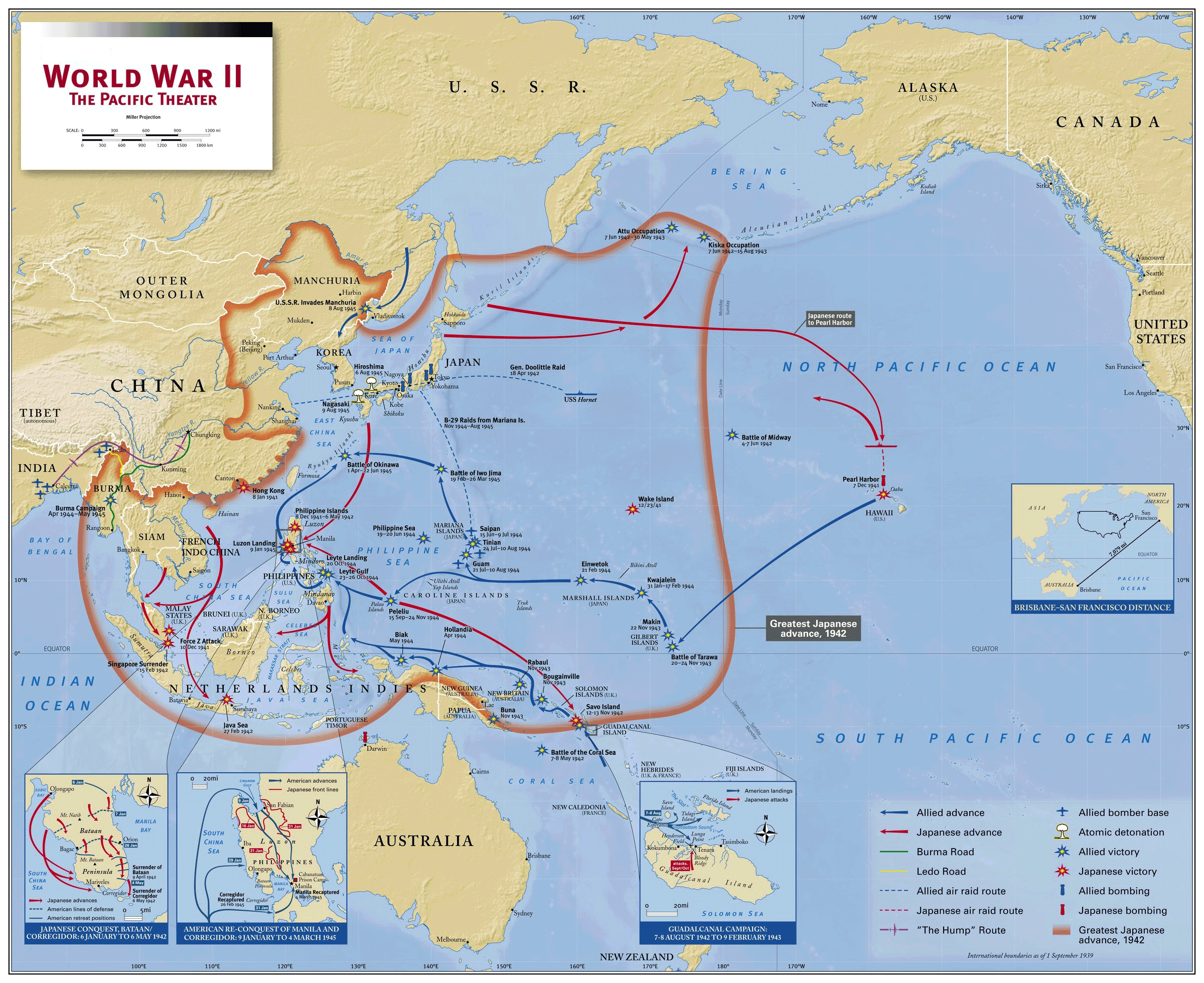The Pacific War was a complicated series of events, strategies and battles. From 7 December 1941 until 2 September 1945, the Pacific war had a tempo that can be defined in four phases. Click on the tabs above to see a quick review of the four phase of the war.


Pacific War Overview

Pacific Map 1

Pacific Map 2


Phases of the Pacific War
Click on the tabs below to review the different phases of the Pacific War. The Enlarge Top Map button will provide a larger view of the top map above. Click on the View PDF Map button to access the map separately in your browser. If you have Adobe Reader installed as a plug-in in your Mac or PC browser, you will be able to zoom in and out, open it in the full version of Adobe Reader or download the PDF to your computer. Accessing the maps on an iPhones or an iPad simply opens the map file. Credits: United Sates Military Academy Department of History and Wikipedia.
From 7 December 1941, until June 1942, the Japanese successfully attacked the Pacific Fleet’s base at Pearl Harbor, took Wake Island and Guam, invaded and conquered the Philippines, Hong Kong, Malaya, and seized the British base of Singapore. They conquered Burma thereby cutting off China from all overland routes to the western allies, and seized the Netherlands East indies and British Borneo, thereby securing a much-needed source of oil. The Japanese advance came to a halt with the American victories at the Battle of the Coral Sea (May 1942) and the Battle of Midway (June 1942).
After the American victories at the Battle of the Coral Sea (May 1942) and the Battle of Midway (June 1942), the second phase was one of a relative stalemate. From June 1942 until late 1943, neither side could muster the land, sea or air required to take the offensive and seized the initiative from the other. The Battle of Guadalcanal (7 August 1942 – 9 February 1943) is the most noted example of this stalemate.
The third phase from mid-1943 to September 1945, can be characterized as the period of Allied offensives. Two drives were under American control: General MacArthur’s Southwest Pacific campaign and Admiral Nimitz’s Central Pacific campaign. MacArthur’s drive was a series of army amphibious operations up the Solomon Island chain and along the northern coast of New Guinea, with the Philippine Islands as the ultimate objective. Nimitz’s strategy was designed to move directly towards Japan and draw the Imperial Navy into a decisive fleet engagement as happened at the Battles of the Philippine Sea (June 1944) and Leyte Gulf (October 1944). MacArthur’s and Nimitz’s campaigns merged into one for the invasion of the Philippines. Afterwards the Central Pacific campaign continued with the invasions of Iwo Jima (19 February – 26 March 1945) and Okinawa (1 April – 22 June 1945).
The war in Europe ended in May 1945. America was weary of war after nearly four years of fighting but Japan showed no signs of surrendering. During the later stages of the war, the Army Air Force, operating from the Mariana Islands and flying the B-29 Superfortress, had begun to fire bomb the cities of Japan. These raids culminated with the dropping of the atomic bombs on Hiroshima on 6 August 1945 and Nagasaki three days later. Japan surrendered to the Allies on 2 September 1945. Operation Downfall was the proposed Allied plan for the invasion of Japan scheduled for 1 November 1945. The planned operation was abandoned when Japan surrendered following the atomic bombings, the Soviet declaration of war and the Soviet invasion of Manchuria. If Downfall had taken place, it would have been the largest amphibious operation in history. The Japanese planned an all-out defense of Kyushu, the southernmost Japanese island. Casualty predictions varied widely, but were extremely high. Depending on the degree to which Japanese civilians would have resisted the invasion, estimates ran up into the millions for Allied casualties.



